#caprivi stripe
Explore tagged Tumblr posts
Video
youtube
Ndhovu Safari Lodge is located around 20 km south of Divundu Bridge along road C 48, just after the Popa Falls in Namibia. It is a peaceful riverine retreat situated on the western banks of the Okavango River, overlooking the well-known Bwabwata Game Park. In true safari tradition, Ndhovu offers luxury tented accommodation, each tent being fully equipped with its own en-suite bathroom facilities. The charming thatched lapa overlooks the banks of the river, where elephants and hippo sometimes congregate, providing residents outstanding game and bird-viewing opportunities whilst enjoying sundowners at the bar and delicious buffet meals. Facilities offered at the lodge include boat trips, fishing excursions and game drives whilst the birdlife in the area will satisfy the most ardent bird-watcher - over 400 different species have been recorded in the surroundings. The Mahango Game Reserve is a mere 2 km away, offering excellent opportunities to view elephant, buffalo, red lechwe and sable antelope, to name a few, in typical riverine and swampland habitat.
---------------------------------------
Die Ndhovu Safari Lodge liegt etwa 20 km südlich der Divundu Bridge an der Straße C 48, gleich nach den Popa Falls in Namibia. Es ist ein friedlicher Platz am westlichen Flußufer des Okavango River mit Blick auf den bekannten Bwabwata Game Park. In wahrer Safari-Tradition bietet Ndhovu Zeltunterkünfte, wobei jedes Zelt komplett mit einem eigenen Bad ausgestattet ist. Die charmante strohgedeckte Lapa überblickt beide Seiten des Flusses, wo sich manchmal Elefanten und Flusspferde versammeln. Sie bietet den Gästen hervorragende Möglichkeiten zur Wild- und Vogelbeobachtung, während sie Sundowner an der Bar genießen. Zu den in der Lodge angebotenen Aktivitäten zählen Bootsfahrten, Angeltouren und Pirschfahrten, zudem die Vogelwelt in der Umgebung auch den leidenschaftlichsten Vogelbeobachter zufriedenstellt - in der Umgebung wurden über 400 verschiedene Arten registriert. Das Mahango Game Reserve ist nur 2 km entfernt und bietet hervorragende Möglichkeiten, Elefanten, Büffel, rote Lechwe und Rappenantilopen, um nur einige zu nennen, in typischen Fluss- und Sumpflandgebieten zu beobachten.
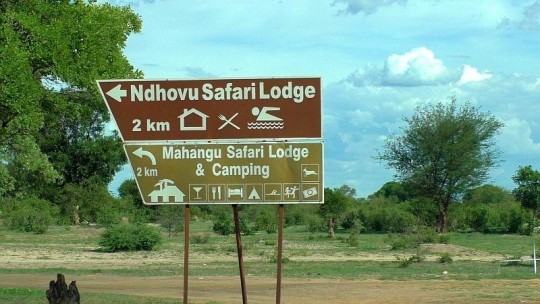




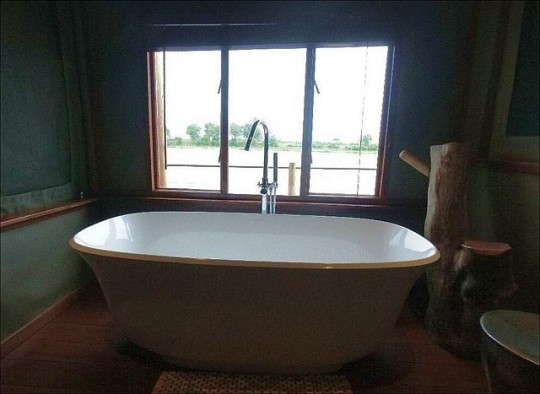



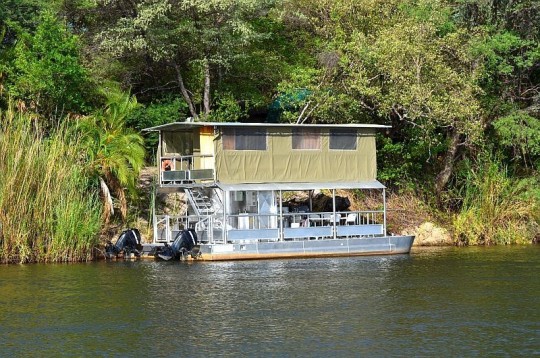
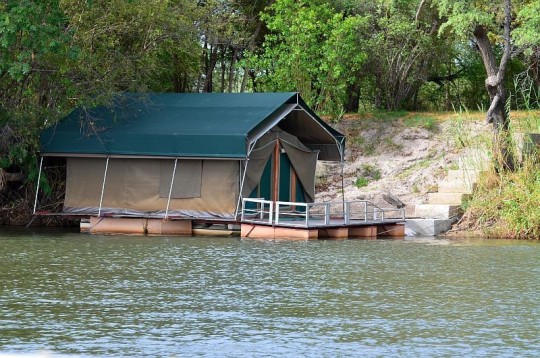
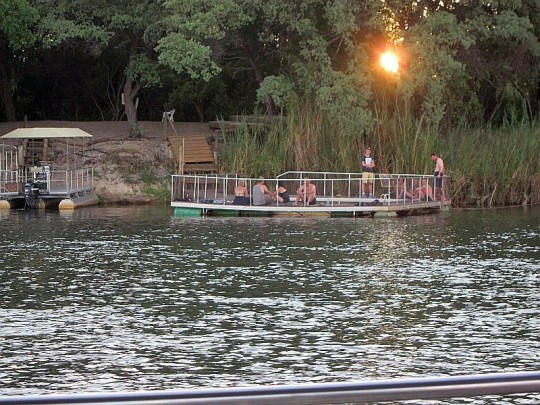
#Ndhovu Safari Lodge#Divundu#Bwabwata National Park#Mahango Game Park#Bwabwata#Mahango#Okavango#Caprivi#Caprivi Streifen#caprivi stripe#Namibia#Afrika#Africa
2 notes
·
View notes
Text
Discovering the world
Namibia 🇳🇦
Basic facts
Official name: Republic of Namibia
Capital city: Windhoek
Population: 3 million (2023)
Demonym: Namibian
Type of government: unitary semi-presidential republic
Head of state: Nangolo Mbumba (President)
Head of government: Saara Kuugongelwa
Gross domestic product (purchasing power parity): $30.66 billion (2023)
Gini coefficient of wealth inequality: 59.1% (high) (2015)
Human Development Index: 0.610 (medium) (2022)
Currency: Namibian dollar (NAD) and rand (ZAR)
Fun fact: It is home to the largest meteorite in the world.
Etymology
The country’s name comes from the Namib Desert, whose name is of Khoekhoe origin and means “vast place”.
Geography
Namibia is located in Southern Africa and borders Angola and Zambia to the north, Botswana to the east, South Africa to the south, and the Atlantic Ocean to the west.

There are three main climates: hot steppe in the northeast, hot desert in the southeast and northwest, and cold desert in the southwest. Temperatures range from 4 °C (39.2 °F) in winter to 34 °C (93.2 °F) in summer. The average annual temperature is 16.7 °C (62 °F).

The country is divided into fourteen regions, which are further subdivided into 121 constituencies. The largest cities in Namibia are Windhoek, Rundu, Walvis Bay, Swakopmund, and Oshakati.

History
1st century BCE: Nama settlement
1485: first European visit
17th century: Herero migration
1750-present: Uukwangali kingdom
1793-1805: Dutch control
19th century-present: Uukwaluudhi kingdom
1805-1884: British control
1878-1884: Cape Colony
1884-1915: German South West Africa
1904-1908: Herero and Nama genocide
1915-1990: South West Africa
1966-1990: South African Border War
1968-1989: Ovamboland
1971-1972: Namibian contract workers strike
1990-present: Republic of Namibia
1994-1999: Caprivi conflict
Economy
Namibia mainly imports from South Africa, the United Arab Emirates, and China and exports to South Africa, Botswana, and China. Its top exports are diamonds, malt beer, and uranium ore.
It has copper, gold, silver, and zinc reserves. Services represent 54.2% of the GDP, followed by agriculture (20.2%) and industry (17.8%).

Namibia is a member of the African Union, the Commonwealth, and the Southern African Development Community.
Demographics
The Ovambo are the largest ethnic group (43.3%), followed by the Herero people (9.1%), Kavango (6.6%), Nama (4.3%), Lozi (1.3%), San (0.9%), and Tswana (0.3%). The main religion is Christianity, practiced by 87.9% of the population, 60.7% of which is Protestant.

It has a neutral net migration rate and a fertility rate of 2.9 children per woman. 54% of the population lives in urban areas. Life expectancy is 66.4 years and the median age is 21.2 years. The literacy rate is 91.5%.
Languages
The official language of the country is English, but it is the home language of only 3.4% of the population. The most spoken languages are Afrikaans (10.4%), Herero (8.6%), Khoekhoe (11.3%), Kwangali (8.5%), Lozi (4.8%), and Ovambo (48.9%).
Culture
Unlike other Africans, Namibians have a strong national identity. They are very social and have one of the highest alcohol consumption rates per capita.
Ovambo people wear a matching top, skirt, and headband with pink and brown stripes.

Kavango men wear a skirt with yellow and brown beads and a headband, while women wear a top and a skirt with blue and white beads and a white headband, white necklaces, and blue anklets.

Herero men wear a shirt, straight pants, and a tall hat with a visor. Women wear a long, wide dress with puffed sleeves and a wide, flat head covering.

Architecture
Traditional houses in Namibia have mud brick walls and thatched, conical roofs and are supported by branches.

Cuisine
The Namibian diet is based on fish, meat, millet, and vegetables. Typical dishes include kapana (grilled beef with spices and tomato sauce), oshingali (a white bean purée), oshithima (a millet porridge served with meat stew and spinach), oukuki (deep-fried dough balls with sugar), and rohack (raw minced meat served on top of bread with onion and pickles).

Holidays and festivals
Like other Christian countries, Namibia celebrates Good Friday, Easter Monday, Ascension Day, and Christmas Day. It also commemorates New Year’s Day, Labor Day, Africa Day, and Africa Day.
Specific Namibian holidays include Independence Day on March 21, Cassinga Day on May 4, Heroes’ Day on August 26, and Family Day on December 26.

Heroes’ Day
Other celebrations include the Bank Windhoek Arts Festival, which includes culinary, performing, and visual arts; the Enjando Street Festival, which features dance, music, and traditional costumes, and Windhoek Karneval, inspired by European carnivals.

Enjando Street Festival
Landmarks
There are two UNESCO World Heritage Sites: Namib Sand Sea and ǀUi-ǁAis.

Namib Sand Sea
Other landmarks include the Bogenfels Arch, the Christ Church, the Duwisib Castle, the Fish River Canyon, and the Kolmaskop Ghost Town.

Christ Church
Famous people
Agnes Samaria - athlete
Bridget Pickering - movie director
EES - rapper
Frankie Fredericks - athlete
Gazza - musician
Juanita du Plessis - singer
Kerry McNamara - activist and architect
Marlice van Vuuren - conservationist
Sylvia Schlettwein - writer
Tinus du Plessis - rugby player

Tinus du Plessis
You can find out more about life in Namibia in this article and this video.
4 notes
·
View notes
Video
youtube
Nkasa Lupala tented lodge is built on the banks of one of the many channels of the Kwando-Linyanti river system. This unique Namibian wetland paradise in the Zambezi Region (Caprivi), is commonly known as Mamili and was recently renamed Nkasa Lupala National Park. The lodge and the Wuparo conservancy are part of the successful and award winning Namibian conservancy program. At Nkasa Lupala Tented Lodge be ready to experience a true sustainable holiday. Nkasa Lupala Tented Lodge is a joint venture between the private sector and the Wuparo Conservancy that is part of the successful and award winning Namibian conservancies program followed by IRDNC and WWF.
------------------------------------------
Die Zelt-Lodge Nkasa Lupala liegt am Ufer eines der vielen Kanäle des Flusssystems Kwando-Linyanti. Dieses einzigartige namibische Feuchtgebietsparadies in der Sambesi-Region (Caprivi) ist allgemein als Mamili bekannt und wurde in Nkasa Lupala National Park umbenannt. Die Lodge und das Wuparo-Schutzgebiet sind Teil des erfolgreichen und preisgekrönten namibischen Schutzprogramms. In der Nkasa Lupala Tented Lodge können Gäste einen wirklich nachhaltigen Urlaub erleben. Die Nkasa Lupala Tented Lodge ist ein Joint Venture zwischen dem Privatsektor und der Wuparo Conservancy, das Teil des erfolgreichen und preisgekrönten namibischen Konservierungsprogramms ist, gefolgt von IRDNC und WWF.













#Nkasa Lupala Tented Lodge#Nkasa Lupala National Park#Kwando#Linyanti#Mamili#Sambesi Region#Caprivi Streifen#caprivi strip#caprivi stripe#Caprivi#Namibia#Afrika#Africa
2 notes
·
View notes
Video
youtube
Namushasha River Lodge celebrates the wonders of the Zambezi water world. Situated 24km south of Kongola on the C49 (D3501), Namushasha is the perfect stopover en route to Victoria Falls.
With elephants, hippos, myriad bird species, waterlilies and African bush, a visit to Namushasha provides an enriching adventure into Nature - to the accompaniment of the chiming of reed frogs, bird calls, hippo grunts and the soothing sound of a boat skimming through water.
Namushasha River Lodge offers guests a superlative choice of exciting activities: Stroll to the traditional heritage centre; early morning or late afternoon river cruises to explore the channels and discover the diverse bird life; or take a trip to the Bwabwata National Park, first by boat along the waterways to later transfer to a game vehicle for an excursion into African bush. At the end of the day, there's nothing that can quite compare to a red Zambezi sunset.
-----------------------------------------
Die Namushasha River Lodge ist ideal gelegen um die exotische Welt des Sambesi zu erkunden. Namushasha liegt 24 km südlich von Kongola an der C49 (D3501) und ist der perfekte Zwischenstopp auf dem Weg zu den Viktoriafällen
Mit Elefanten, Flusspferden, unzähligen Vogelarten, Seerosen und afrikanischem Busch bietet ein Besuch in Namushasha ein bereicherndes Naturabenteuer - begleitet von Schilffröschen, Vogelstimmen, Flusspferdgrunzen und dem beruhigenden Geräusch eines Bootes, das durch Wasser gleitet .
Die Namushasha River Lodge bietet ihren Gästen eine Auswahl an aufregenden Aktivitäten: Bummeln zum traditionellen Kulturerbe-Zentrum. Flusskreuzfahrten am frühen Morgen oder am späten Nachmittag, um die Kanäle zu erkunden und die vielfältige Vogelwelt zu entdecken. Oder einen Ausflug in den Bwabwata-Nationalpark, zuerst mit dem Boot entlang der Wasserstraßen, um später in ein Pirschfahrzeug umzusteigen und einen Ausflug in den afrikanischen Busch zu unternehmen. Am Ende des Tages gibt es nichts, was mit einem roten Sambesi-Sonnenuntergang vergleichbar wäre.










#Namushasha River Lodge#Namushasha#Sambezi#Zambesi#Caprivi Streifen#caprivi stripe#Caprivi#Namibia#Afrika#Africa
6 notes
·
View notes
Video
youtube
Die Sambesi Region ist ein regenreiches Gebiet im Nordosten Namibia. Der alte (deutsche) Name Caprivi oder Caprivizipfel wird heute noch oft verwendet. Allerdings wurde das Gebiet 2013 offiziell in Sambesi umbenannt.
The Zambesi region is situated in the north-east of Namibia and unlike the rest of the country is blessed with good rainfalls. The old german name Caprivi or Caprivi Strip is still in common use although the region had been officially renamed to Zambezi in 2013.











#Zambesi Region#Caprivi#Caprivi Streifen#Caprivi Stripe#Sambesi Region#Sambesi#Zambesi#Namibia#Afrika#Africa
3 notes
·
View notes
Video
youtube
Situated 16km from Rundu in the Kavango region, this gem of a lodge (with campsite) provides that necessary break from the road. It's one of the Caprivi accommodation treasures to discover - and frequent - when in the northern reaches of the country. Entering Hakusembe River Lodge at the end of the winding gravel track, you are greeted with a refreshing image of green lawn, large trees, a collection of thatched chalets and a strip of sparkling river. River birds fly up between the reeds, people row their dugout canoes on the river and soft muted sounds float over the waters from the villages on the far bank.
Dieses Juwel einer Lodge (mit Campingplatz) liegt in der Region Kavango, 16 km von Rundu entfernt, und bietet die notwendige Unterbrechung auf dem Roadtrip. Die Lodge ist einer der verborgenen Sch��tze in der Caprivi-Region, wie man sie im Norden des Landes noch häufig entdecken kann. Wenn man die Hakusembe River Lodge, am Ende der gewundenen Piste erreicht, wird man mit einem erfrischenden Bild von grünem Rasen, großen Bäumen, einer Sammlung strohgedeckter Chalets und einem Streifen des funkelnden Flusses begrüßt. Zwischen dem Schilf fliegen Vögel umher, Menschen rudern mit ihren Einbaumkanus auf dem Fluss und gedämpfte Geräusche schweben aus den Dörfern am anderen Ufer über das Wasser.












#Hakusembe River Lodge#hakusembe#Caprivi Stripe#caprivi strip#Caprivi Streifen#Caprivi#Okavango#Namibia#Afrika#Africa
2 notes
·
View notes